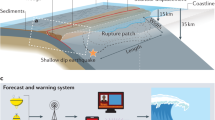Abstract
— Underwater landslides can trigger local tsunamis with high runup, endangering human life and devastating coastal cities, offshore structures, communication cables, and port facilities. Unfortunately, hazards from underwater landslides are not well understood and the extents of their potential damage remain difficult to ascertain at present. There is immediate need for multidisciplinary research to improve our understanding and plan countermeasures for mitigating their hazards. Conceived in the wake of the Papua New Guinea earthquake landslide and tsunami of 1998, this volume summarizes the state-of-the-art knowledge on underwater landslides and their potential to generate tsunamis from the multidisciplinary perspectives of observational and engineering seismology, geotechnical engineering, marine geology, and hydrodynamics. These various fields of engineering and science offer new synergetic opportunities to examine landslide tsunamis. This paper makes recommendations on future research directions, and will hopefully advance scientists' and engineers' understanding of these natural hazards and assist planners in mitigating their risks.
Similar content being viewed by others
Author information
Authors and Affiliations
Rights and permissions
About this article
Cite this article
Bardet, JP., Synolakis, C., Davies, H. et al. Landslide Tsunamis: Recent Findings and Research Directions. Pure appl. geophys. 160, 1793–1809 (2003). https://doi.org/10.1007/s00024-003-2406-0
Issue Date:
DOI: https://doi.org/10.1007/s00024-003-2406-0




